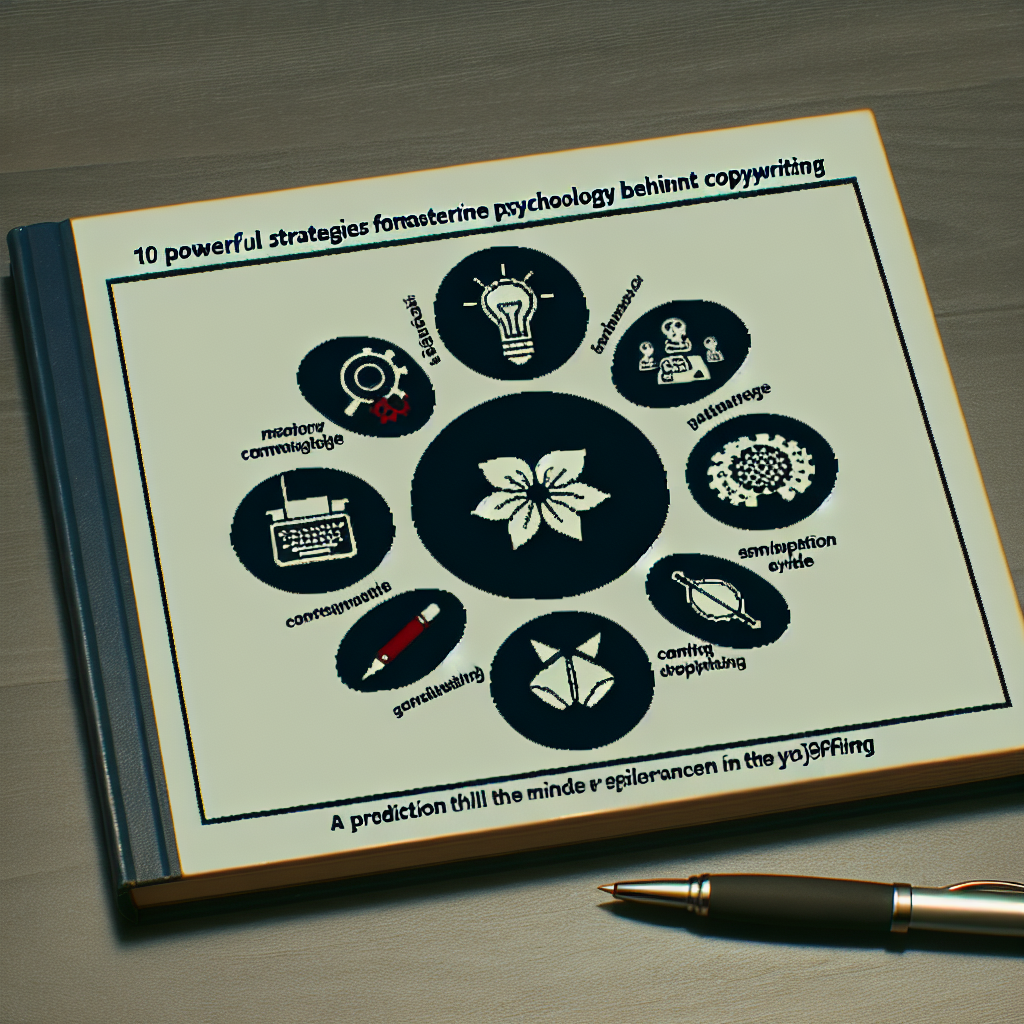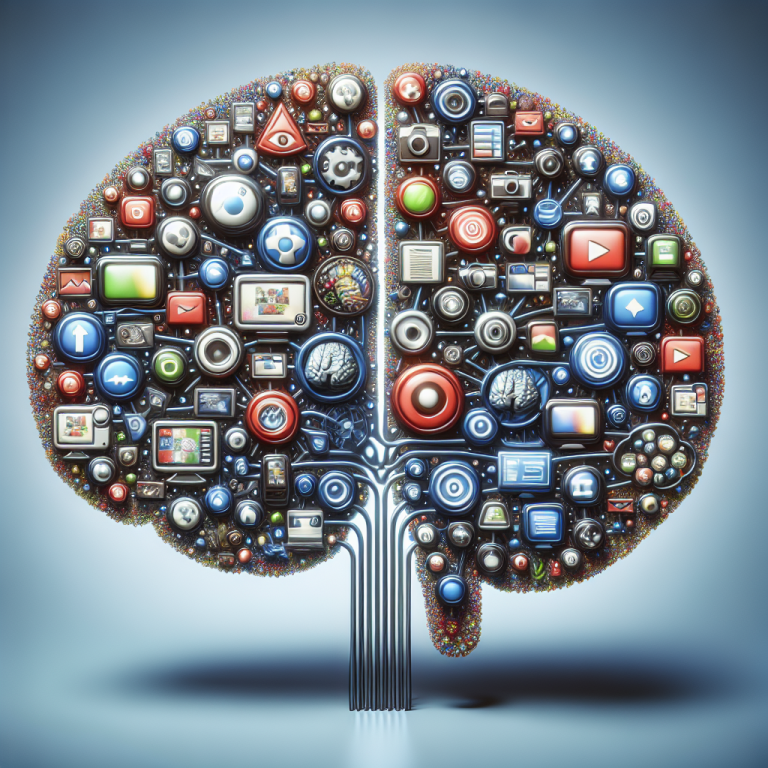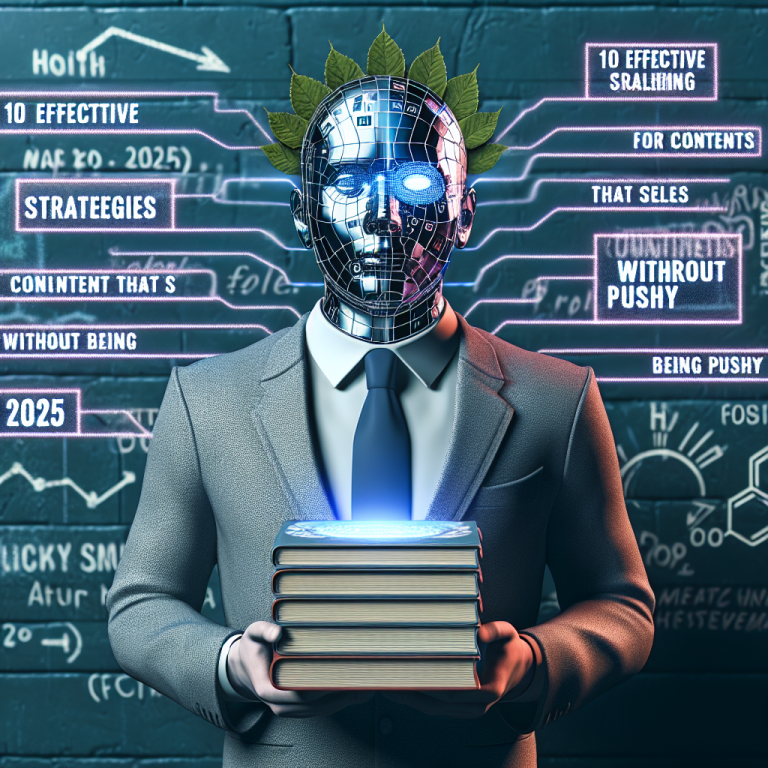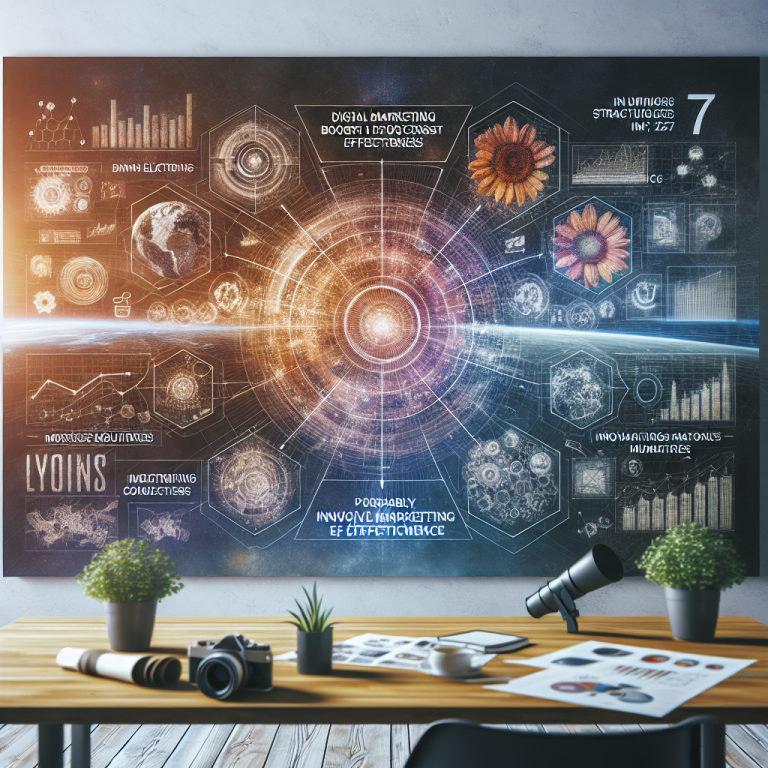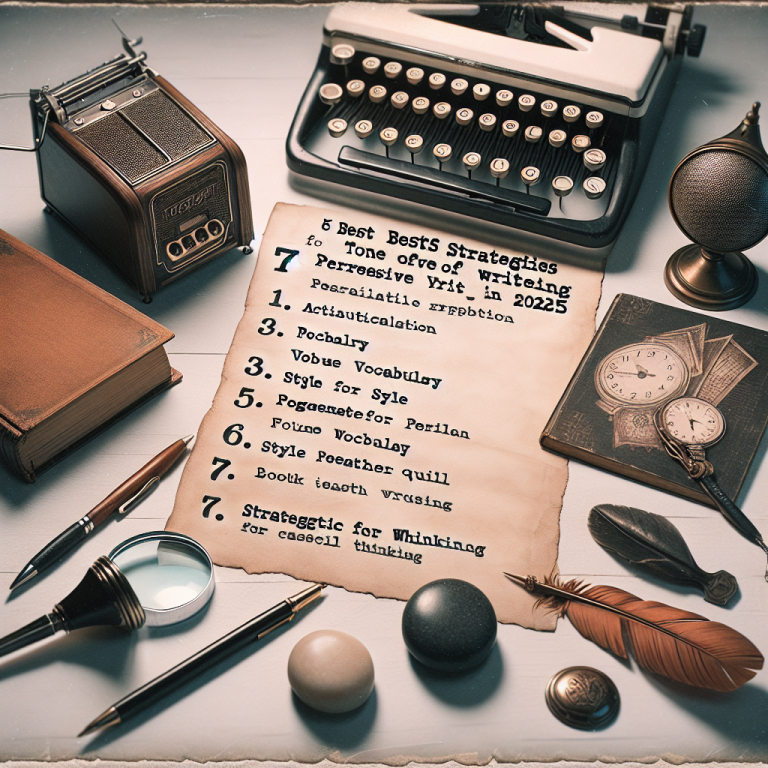10 Powerful Strategies to Master the Psychology Behind Great Copywriting in 2025
- 1. Understand Your Audienceâs Psychological Triggers
- 2. Use Storytelling to Evoke Emotions
- 3. Leverage Social Proof Effectively
- 4. Implement Scarcity and Urgency Tactics
- 5. Craft Compelling Calls-to-Action (CTAs)
- 6. Employ Color Psychology in Your Copy
- 7. Utilize Cognitive Biases to Your Advantage
- 8. Use Personalization to Increase Engagement
- 9. Test and Optimize Through Psychological Insights
- 10. Stay Updated on Emerging Psychological Trends in 2025
1. Understand Your Audienceâs Psychological Triggers
Identifying Key Motivations
Understanding the psychology behind great copywriting begins with knowing what motivates your target audience. Human decisions are often driven by subconscious triggers like fear, greed, desire, or social acceptance. In 2025, marketers who tap into these psychological triggers create more compelling messages. For example, emphasizing how a product resolves a common pain point activates emotional responses that lead to conversions.
Studies show that emotional triggers influence up to 95% of purchasing decisions (Research by Nielsen). As a copywriter, your goal is to identify which triggers resonate most with your audience segments. Conduct surveys, analyze social media comments, and use analytics to gather insights into your audience’s subconscious drivers.
Creating Buyer Personas with Psychological Depth
Develop detailed buyer personas that delve into the psychological makeup of your ideal customers. Think beyond demographics; consider fears, aspirations, and values. For example, a persona for eco-conscious consumers might include their desire to leave a positive legacy and their fear of pollution.
Incorporate these insights into your copy by framing benefits in a way that appeals directly to those motivations. Use language that evokes feelings of trust, security, or excitementâkey emotional states that influence decision-making in 2025. The psychology behind great copywriting hinges on connecting emotionally, not just logically.
2. Use Storytelling to Evoke Emotions
The Power of Narrative
Humans are naturally wired for stories. In 2025, storytelling remains a cornerstone of great copywriting because it activates the brainâs emotional centers. Sharing real-life stories or creating relatable scenarios helps your audience see themselves benefiting from your product or service.
A well-crafted story can evoke empathy, hope, or excitementâpowerful emotional states for driving action. For instance, sharing a customer success story humanizes your brand and builds trust by demonstrating real results.
Structuring Your Stories for Maximum Impact
To leverage storytelling effectively, structure your narratives with clear elements: setting, conflict, resolution, and a call to transformation. Keep stories concise but emotionally rich. Use vivid language and sensory details to deepen engagement.
Incorporate emotional cues consistently throughout your copyâsuch as highlighting pain points or triumphsâso that your audience feels connected. Remember, understanding the psychology behind great copywriting means knowing that stories are one of the most effective ways to influence subconscious thoughts and decisions.
3. Leverage Social Proof Effectively
The Role of Peer Influence
Social proof is one of the strongest psychological principles in marketing. In 2025, consumers are increasingly influenced by reviews, testimonials, and user-generated content. When people see others similar to themselves endorsing a product, it reduces uncertainty and boosts trust.
According to a Nielsen report, 92% of consumers trust recommendations from friends over other forms of advertising. This trust taps into the human need for social validationâan essential aspect of the psychology behind great copywriting.
Strategies for Showcasing Social Proof
Use testimonials, case studies, and influencer endorsements strategically on your website and marketing materials. Highlight real stories that resonate with your target audience’s aspirations and fears. Incorporate visualsâlike customer photos or video reviewsâto increase authenticity.
In 2025, dynamic social proof modules (like recent reviews or live follower counts) can create a sense of urgency and reliability. The psychology behind great copywriting depends heavily on making your audience see that others have benefited, reducing perceived risk of the purchase.
4. Implement Scarcity and Urgency Tactics
The Power of Limited Availability
Scarcity is a potent psychological trigger that prompts quick action. When your audience perceives that a deal is limitedâbe it time, quantity, or accessâthey are motivated by fear of missing out (FOMO). In 2025, scarcity tactics are more sophisticated, utilizing AI-driven personalization to create real-time urgency.
For example, messages like âOnly 3 seats left!â or âSale ends in 2 hoursâ activate urgency. These tactics tap into deep-seated fears of regret that drive immediate responses.
Balancing Scarcity with Authenticity
While scarcity boosts conversions, overuse or false claims can erode trust. Always ensure that your scarcity statements are truthful and transparent. Use psychological insights to establish authenticityâsuch as highlighting genuine limited quantities or exclusive access.
Integrate countdown timers and real-time updates to increase urgency dynamically, making your copy more persuasive and aligned with the psychology behind great copywriting in 2025.
5. Craft Compelling Calls-to-Action (CTAs)
Psychological Elements of Effective CTAs
Your CTA is the final nudge in the psychology behind great copywriting. In 2025, successful CTAs leverage urgency, clarity, and emotional appeal. Words like âGet Started Now,â âClaim Your Spot,â or âUnlock Your Futureâ activate feelings of excitement and immediacy.
Use action-oriented language that taps into the audienceâs desire for benefits, security, or exclusivity. The placement, color, and size of CTAs should also be optimized to draw attention without overwhelming the reader.
Testing and Personalizing CTAs
A/B testing different CTA phrases based on your audience’s psychological triggers can significantly improve conversion rates. Personalization enhances relevance; for example, if your data shows that a segment values exclusivity, tailor your CTA accordingly.
In 2025, leveraging AI to customize CTAs based on individual user behavior will be a key trend. The psychology behind great copywriting incorporates ongoing testing to refine your messaging until it resonates deeply.
6. Employ Color Psychology in Your Copy
Colors that Influence Decision-Making
Colors evoke specific emotional responses and can influence behaviors subconsciously. In 2025, integrating color psychology into your copyâwhether through your website, email, or adsâcan enhance persuasiveness. For example, blue conveys trust, green symbolizes health and growth, and red elicits excitement or urgency.
Use color strategically to support the emotional tone of your message. Highlight key words or buttons with contrasting colors to guide the readerâs attention naturally.
Designing with Psychological Intent
Combine color psychology with clear, concise copy for maximum effect. Avoid overwhelming your audience with too many colors; instead, focus on a palette that aligns with your brand and the psychological cues you want to evoke.
In 2025, advanced A/B testing allows marketers to experiment with color schemes more effectively, continuously optimizing the psychological impact of visual elements in copy.
7. Utilize Cognitive Biases to Your Advantage
Understanding Key Cognitive Biases
Cognitive biases are unconscious mental shortcuts that influence decision-making. In 2025, masterful use of biases like reciprocity, anchoring, and loss aversion can greatly enhance your copyâs effectiveness. For instance, highlighting a âlimited-time bonusâ leverages loss aversion to encourage action.
By understanding these biases, you craft messages that naturally align with how the brain processes informationâa core principle in the psychology behind great copywriting.
Applying Biases in Your Copy
Use anchoring to set high perceived value first, then present your offering as a bargain. Employ reciprocity by offering free value upfront, like ebooks or consultations, which increases the likelihood of reciprocation.
Always ensure your use of biases is ethical and transparent. When applied correctly, they can significantly increase conversions in 2025.
8. Use Personalization to Increase Engagement
The Impact of Personalization
Personalization taps into the psychological principle that people respond better when messages feel relevant to their needs and circumstances. In 2025, AI-driven data analysis enables hyper-personalized communication across all channels.
Use this to craft messages that speak directly to individual pain points, aspirations, or purchase history. Relevant content increases trust and emotional connection.
Practical Personalization Tips
Implement dynamic content that adjusts based on user behaviorâsuch as personalized product recommendations, greetings, or tailored offers. Use data ethically and transparently to build trust.
Real-world success stories show that personalized copy increases engagement rates by over 50%. The psychology behind great copywriting today relies heavily on understanding and applying personalized insights.
9. Test and Optimize Through Psychological Insights
The Role of Continuous Testing
Successful copy in 2025 is never static. Use psychological principles to inform your testingâtry different emotional appeals, headlines, and CTAsâand assess what resonates most. Data-driven insights help refine your approach.
A/B testing remains vital; incorporate hypotheses based on psychological theories such as social proof, scarcity, or emotional triggers to validate their effectiveness in your campaigns.
Analytics and Feedback Loops
Leverage analytics tools to monitor engagement and conversion metrics. Gather qualitative feedback through surveys or comments to understand the emotional response your copy elicits.
Applying psychological insights continually improves your copyâs effectiveness, ensuring it remains relevant amidst changing consumer preferences in 2025.
10. Stay Updated on Emerging Psychological Trends in 2025
Keeping Ahead of the Curve
The landscape of psychological influence is constantly evolving. In 2025, emerging trends like neuro-marketing, virtual reality experiences, and advanced behavioral analytics are shaping how we understand and harness the psychology behind great copywriting.
Stay informed by following industry research, attending conferences, and participating in online communities. Integrating new insights ensures your copy remains compelling and relevant.
Adapting to Consumer Psychology Changes
As consumers become more savvy and data-informed, their psychological triggers may shift. Regularly revisit your audience research and adapt your messaging accordingly. Use new technology and psychological science discoveries to craft emotionally resonant copy.
Remaining ahead in understanding consumer psychology will be crucial to sustaining success in digital marketing in 2025.
Conclusion
Mastering the psychology behind great copywriting is essential for success in 2025. By understanding your audienceâs subconscious triggers, leveraging storytelling, social proof, scarcity, and personalization, and continuously testing and adapting, you can craft compelling copy that truly influences behavior. Remember, in todayâs competitive landscape, the most effective messaging taps into deep-seated psychological principlesâan art and science that will continue evolving in 2025 and beyond. Embrace these strategies, and watch your conversions soar as you unlock the power of the psychology behind great copywriting.
Frequently Asked Questions
- What is the psychology behind great copywriting?
Itâs the understanding of subconscious triggers and human behavior that influence how people respond to marketing messages. Effective copy uses psychological principles to resonate emotionally, build trust, and motivate action. - How can I incorporate psychology behind great copywriting into my marketing?
Identify your audienceâs core motivations, use storytelling, leverage social proof, and employ psychological tactics like scarcity and personalization to make your copy more persuasive. - Why is storytelling important in mastering the psychology behind great copywriting?
Stories evoke emotions, help people relate to your message, and activate neural pathways associated with empathy and memory, making your marketing more impactful. - Are there ethical considerations when using psychology in copywriting?
Absolutely. Itâs vital to use psychological principles ethically, avoiding manipulation or false claims. Authenticity and transparency build trust and long-term relationships. - What emerging psychological trends should I watch for in 2025?
Trends include neuro-marketing, advanced behavioral analytics, immersive experiences like VR, and personalized AI-driven messaging. Staying updated allows you to stay ahead in your marketing strategies.

